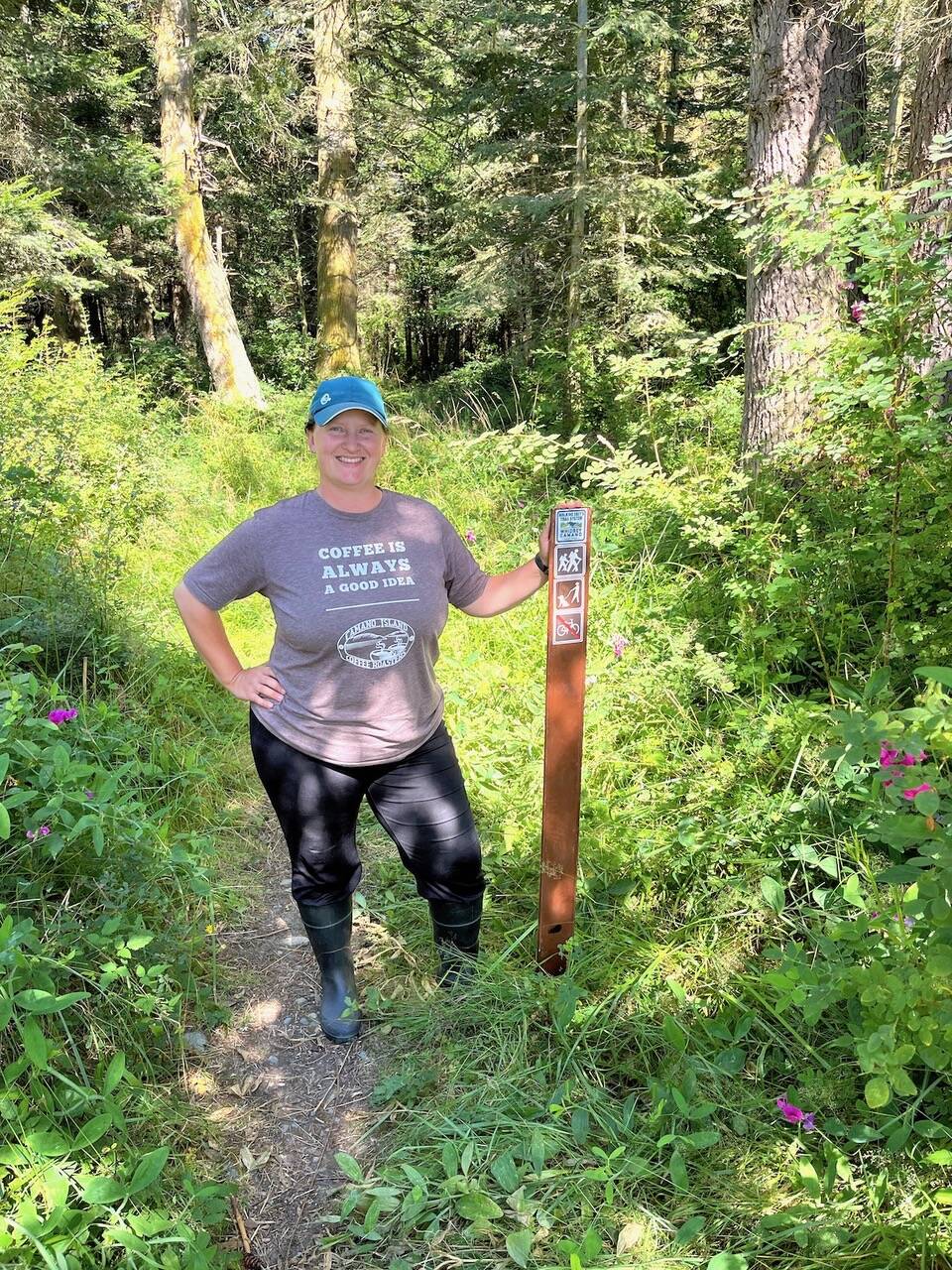Ever since the retreating Ice Age glaciers carved out a beautiful, level spot in the center of our Rock that we now call Ebey’s Prairie, it has been considered a treasure for agriculture of all kinds.
The indigenous peoples who were here for at least 3,000 years grew food and hunted deer and other game on the prairie. When Captain George Vancouver sailed down Admiralty Inlet in his ship The Discovery in 1792 and gazed at Ebey’s Prairie, he described it as “a natural garden waiting for the English farmer to perfect it.” When the Euro-American settlers arrived in the mid-19th century they raced to stake their farmland claims and start growing potatoes, wheat and other crops.
And in 1978, when developers threatened to chop up Ebey’s Prairie and cover it with homes and apartments, farmers and community members banded together and persuaded Congress to create Ebey’s Landing National Historical Reserve. In the intervening 44 years, the Reserve has protected virtually the entire prairie from any further residential or commercial development. Amazingly, it still looks pretty much like it did three millennia ago.
What no one could have imagined, however, is how much visitors to the Rock have grown to treasure Ebey’s Prairie, every square inch of it, over the past half century. It’s estimated that more than a million people will make at least a brief stop on the prairie this year.
The Bluff Trail, which spans a five-mile loop from Ebey’s Landing along the gorgeous bluff and back along beach, now has several hundred thousand hikers every year and is frequently cited in trail guides as one of the best hikes in the United States. The Kettle Trail and the Pratt Loop Trail have also seen a huge increase in visitors in recent years.
Truth is, however, that despite those several elements Ebey’s Prairie really has few places for visitors to stop, walk and appreciate its beauty. Visitors are frequently seen circling their cars around and around looking for a parking spot. The Bluff Trail is definitely “overloved” and has suffered some ecological damage from too many human feet trampling on it.
Now comes the Whidbey Camano Land Trust with some help. A beautiful new visitor spot will open in September. The local nonprofit land protection group has, for years, been securing easements on privately owned farmland in the Reserve to help maintain its rural, agricultural character and heritage. Most of those easements, for which farmers receive payments and which limit additional structures they can build on the land, also contained a provision giving the land trust a right to create a few hiking trails through those farmlands.
“The idea for developing a Walking Ebey’s trail network started around 2008 and we began real planning in 2016,” said Jessica Larson, the land trust’s stewardship director who is in charge of creating and maintaining the trails. “And now, finally, we will open a beautiful 3.5-mile trail that wends through forests and farmlands from the county’s Rhododendron Park in the north to our new parking lot on Engle Road at Admiralty Inlet.”
Of course that will mean a rigorous seven-mile roundtrip for hikers to get back to wherever their cars are, “so I’m curious to see how many people will do the whole roundtrip — or maybe just a stretch.”
Along the way, there will also be a short, one-mile trail that splits off from the longer trail and leads to the nearby Prairie Wayside with its sweeping views of the prairie.
The aim of Walking Ebey’s is to give visitors an alternative to the Bluff, Kettle and Pratt trails and a chance to see different parts of the Reserve. The land trust will host tours of the new trail in the weeks ahead and more information will be available on its website, wclt.org.
“This new trail goes through the private property of 12 different land owners,” Larson said. “When building it, we had to be ultra careful to respect the wishes of those land owners. We don’t want visitors impacting crops or other agricultural activity. We are installing signs and some fencing to keep people from wandering off the trail. We’ll have a porta-potty at the parking lot, plenty of doggie poop bags and garbage cans. And we’ll be constantly monitoring the usage and wear-and-tear.”
This is by far the most complex trail the land trust has ever created. About a year ago, it opened the beautiful Beach View Farm Trail off Swantown Road near Oak Harbor, but Larson said “that involved only one private land owner — this one has 12 and is more than twice as long.”
Ebey’s Reserve, which is governed by a trust board, is happy that this new trail is about to open and will take some stress off the Bluff Trail and Ebey’s Landing, according to Marie Shimada, reserve manager. “It’s very inspiring for our island community that we have private land owners and a local nonprofit that are able to partner together to provide a trail system as large as Walking Ebey’s,” Shimada said. “As always, we encourage the public to adhere to trail rules and etiquette regarding farmland and livestock.”
Eventually, the Walking Ebey’s trail system is envisioned to have a total of about eight miles. In addition to the new Rhododendron-to-Admiralty trail, there will be a north trail that will split off and run back to South Main Street in Coupeville. The Prairie Wayside will add a loop that takes hikers back via a different route to the Admiralty parking lot. And there will be a trail that connects from there to Fort Casey State Park.
“Those are still down the road quite a ways,” Larson said. “We have to get this new one opened and well-maintained first.”
Indeed. Opened, well-maintained, respected and loved … by many happy and thrilled visitors.
Harry Anderson is a retired journalist who worked for the Los Angeles Times and now lives in Central Whidbey.



